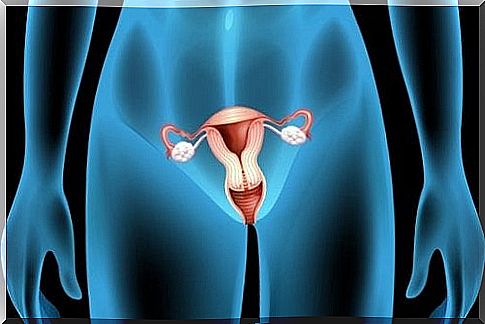Hypermenorrhea: Causes And Treatments

Menstruation affects the entire female population for a long period of their life. This is not a problem for some women. However, others suffer extremely. Menorrhea, or menstruation, varies almost with each woman. However, it is sometimes possible to make a classification according to the way it is presented. One of the existing cases is that of hypermenorrhea.
We will explain to you in this article what hypermenorrhea is. What are its most common causes. What types of treatments are used to treat it. And above all, when to see a doctor.
What is hypermenorrhea?
The term hypermenorrhea (from the Greek ὑπερ – hyper- , “a lot”) refers to the abundance of menorrhea, ie menstrual flow. An often used synonym is “menorrhagia”. Excessive bleeding that lasts longer than usual. Or that involves bleeding greater than 80ml in a single cycle (about 6 tampons per day). However, it is not possible to quantify the amount of “excessive” menstruation. Each woman has her own period. We can’t talk about abnormal periods until they happen unexpectedly. As long as they do not involve pain or other types of pathologies.

Hypermenorrhea generally refers to excessive menstruation (always using the term with caution) in a cycle of normal duration. If the cycles are, moreover, frequent and close, we would speak of polyhypermenorrhea, synonymous with the two preceding terms. Whether it is one or the other of these pathologies, the result is often exhaustion or fatigue. This is often due to the loss of iron, or anemia, caused by the loss of blood.
It is also important not to confuse hypermenorrhea with metrorrhagia, or the alteration of bleeding that does not come from menstruation. It is frequent after menarche (first menstruation), in a period of “adjustment” of the menstrual cycle.
What are the causes of hypermenorrhea?
The causes of hypermenorrhea are very varied, depending on whether it presents itself or as a symptom of other pathologies. In any case, it is very important to see a specialist when it appears. Only a gynecologist can accurately diagnose the causes. These vary from uterine cancer to a small hormonal imbalance.
The most common causes are:
- Uterine myomas: benign tumors of the uterus that affect the musculature of the uterus.
- Polyps: another class of benign tumors that affect the surface of the endometrium, increasing it.
- Having had multiple pregnancies : the extension and contraction of the musculature of the uterus during and after pregnancy can cause an increase in bleeding tissue. Added to this is a loss of strength in muscle tissue that prevents adequate retention of bleeding.
- Pathologies linked to poor blood clotting : difficulty or inability to clot properly increases bleeding.
- Pelvic congestion syndrome: this pathology is characterized by the dilation of the pelvic venous vessels (pelvic varices). This disease always appears in menopause.
- Uterine cancer: Although it is a less common situation, it can be detected by hypermenorrhea, one of its symptoms.
Treatment of hypermenorrhea
Treatment for hypermenorrhea varies depending on its cause. This is because cancer is not treated the same way as a fibroid. We have also already seen that hypermenorrhea can be a disease in itself but sometimes be a symptom of another.
Clinical treatments will therefore vary from hormonal treatments, such as taking contraceptives, to surgical ones, such as removing the ovaries. Anemia will also often be treated because it usually involves increased bleeding. Treatment will also often involve pain relievers because hypermenorrhea is usually accompanied by pain in the stomach.
Moreover, it will not always be something serious. It is therefore advisable to consult a gynecologist before thinking that we have a serious illness.

Other considerations
Only a specialist can diagnose this disease. Be careful, however, because any increase in menstrual flow does not correspond to hypermenorrhea. It is therefore very important not to worry too much. We shouldn’t be alarmed if even one of the cycles is abnormal. Remember that menstruation is affected by many factors, from diet to age.
A gradual increase in flow, which occurs frequently and does not decrease, should also not be taken lightly. In addition, taking analgesics alleviates the pain but does not make the disease go away. We should therefore not take them as the only treatment.
To conclude. It is essential to be responsible and to see a doctor when necessary. He will be able to make a correct diagnosis of what is happening to us and tell us what the most appropriate treatment is.










